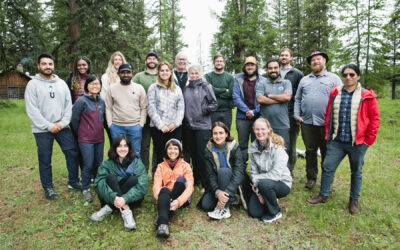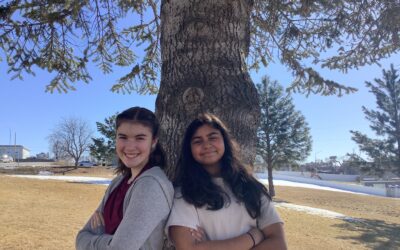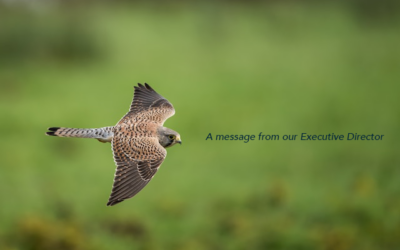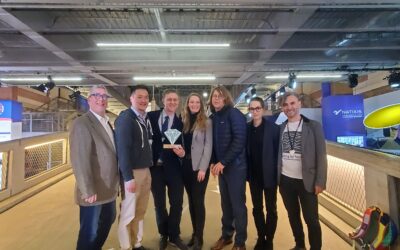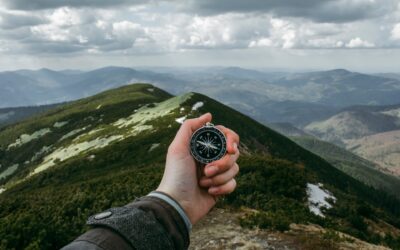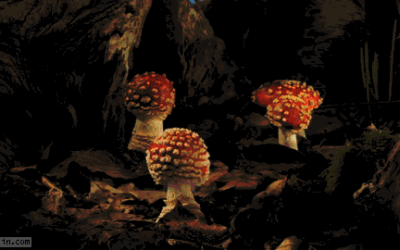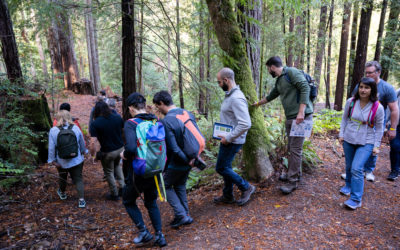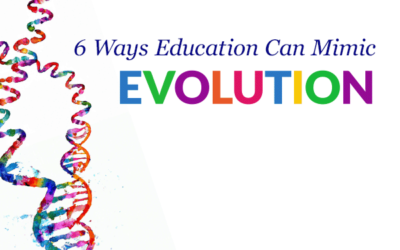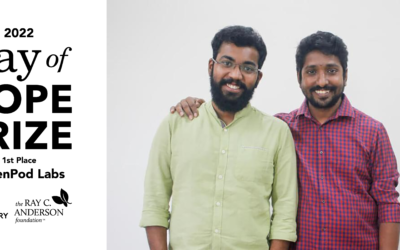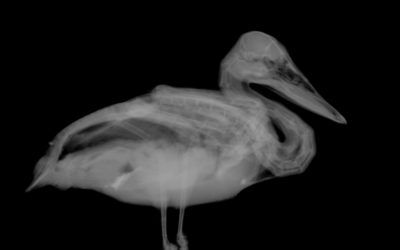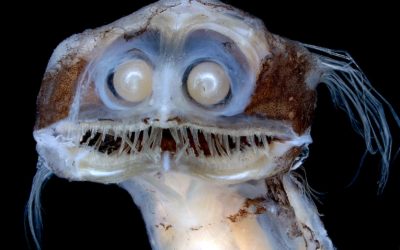News and Ideas from the Biomimicry Institute
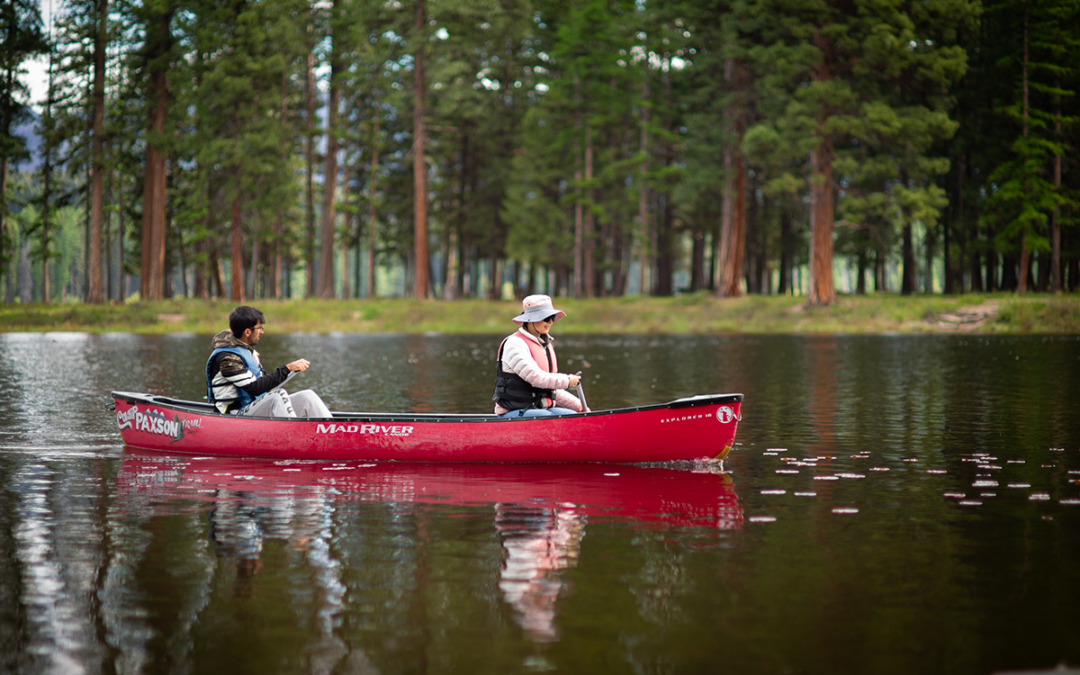
Exploring Big Questions at the 2024 Launchpad Retreat
The Biomimicry Institute has completed a weeklong nature immersion as part of our Launchpad Program. We brought together 20 of the most curious and creative minds from around the world in May to share ideas in the wilds of Montana, and reconnect with nature and themselves.
More Stories
Biomimicry and the Sea: 5 Incredible Innovations for World Oceans Day
This World Oceans Day, we are diving deeper into the myriad reasons why the preservation of our oceans and sea life is of paramount importance.
Living World Intervention
The Biomimicry Institute hosts nature retreats as part of their Ray of Hope and Launchpad programs. It’s like summer camp for bio-inspired innovators. What Launchpad Program Manager Dave Hutchins came to understand while hosting our 2023 Launchpad cohort in Montana, is that these retreats are more like an intervention.
Meet the Newest Young Innovators in Biomimicry
From tackling the issues of microplastics and urban heat islands, to addressing clean energy solutions through the use of wind turbines and underwater solar panels, the Biomimicry Institute’s 2022-23 Youth Design Challenge (YDC) winners have offered unique, nature-inspired ideas to solve local design challenges. The YDC, now in its sixth year, serves as a bridge from core concepts to advanced project-focused STEM learning for middle and high school students across the world.
The Transition
The Biomimicry Institute’s Executive Director, Beth Rattner, writes about the Institute’s transition into a new Executive Director.
Biomimicry Finding Success in Deep Tech
3 Ray of Hope Prize Alumni Win Big at the Hello Tomorrow Deep Tech Global Summit.
Why Startups with the Right Sustainability Data are Poised to Thrive
Navigating the landscape of sustainable reporting frameworks is not easy or affordable for most startups. Instead, they need to focus on being lean and flexible to survive the early stages while striving for an ambitious impact-focused mission. However, some recent news from the White House and UN make us believe that startups that are prepared with the right sustainability data will thrive with a unique value proposition.
Not the “Zombie Fungus” from The Last of Us, But Disruptive Just the Same
With the hit HBO series The Last of Us, we wanted to take some time to talk about Fungi. While the zombie causing fungus makes for must watch TV, we have another type of fungi we are watching. Let’s dive into the fantastical world of fungi.
A Startup Support Program Focused on Founders and Their Connection to Nature
The Biomimicry Institute helps startup founders challenge themselves physically, mentally, and emotionally by taking them to camp (literally). Read about how this approach helps to unlock creativity, tap into next-level networking connections, and expand opportunities for business that would have otherwise been missed.
6 Ways Education Can Mimic Evolution
Traditional and antique educational systems require their next evolution. Learn Biomimicry asks: what can we learn from nature in how we create evolutionary education using biomimicry?
Biomimicry and Philosophy
The biomimicry movement is highly practical in orientation. And yet, underlying and motivating the practices of biomimicry, there lies a distinctive philosophy–a profound way of understanding and relating to nature that challenges many of the core assumptions of contemporary thought. In this blog post, Dr. Henry Dicks discusses the relationship between biomimicry and philosophy.
5 Nature-Inspired Ways to Do Good This Giving Tuesday
The countdown to the biggest celebration of generosity has begun. On Tuesday, November 29, communities worldwide are joining together to support a cause, issue area, culture, or identity. Giving Tuesday is a day that encourages people to do good, and this simple idea kickstarts the holiday season with a tone of selfless kindness.
A Ray of Hope: Top Biomimicry Startups Making an Impact
“From nature’s blueprints, these companies are commercializing what our world so urgently needs—products that solve problems without creating new ones… ” Learn more about this year’s Ray of Hope Prize® First Place Recipient GreenPod Labs, an India-based agricultural biotechnology startup focused on tackling food loss problems in developing countries, and Second Place Runner-Up Fusion Bionic, a company that has engineered a nature-inspired solution for surface textures to eliminate the need for harmful chemicals.
Looking Within: Design Inspired by Teeth and Bones
It’s easy to focus on the salient features of any living being: the color of a bird’s plumage, an elephant’s immensity, the musculature of the human leg. However, when you look deeper, the incredible durability and structure of bones is an engineering marvel. It turns out bones and teeth are capable of inspiring innovation in a variety of fields, including aeronautics, architecture, and automotive engineering.
Disappearing Freaks of Nature—and the Secrets Going With Them
The ultimate freak show is an understatement: Armed worms, sex-crazed fish, poison-hungry butterflies, polka-dotted flying good luck charms, and the most despicable creature born with a grin whose blood fights gravity. No one knows all the secrets they hold, but what’s clear is that the strangest amongst us are showing us a better way to live. The catch? They are teaching us their survival skills as they disappear.


